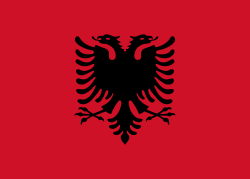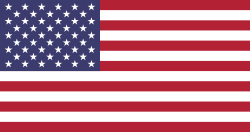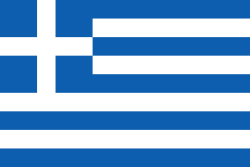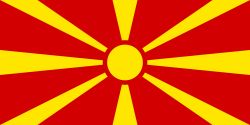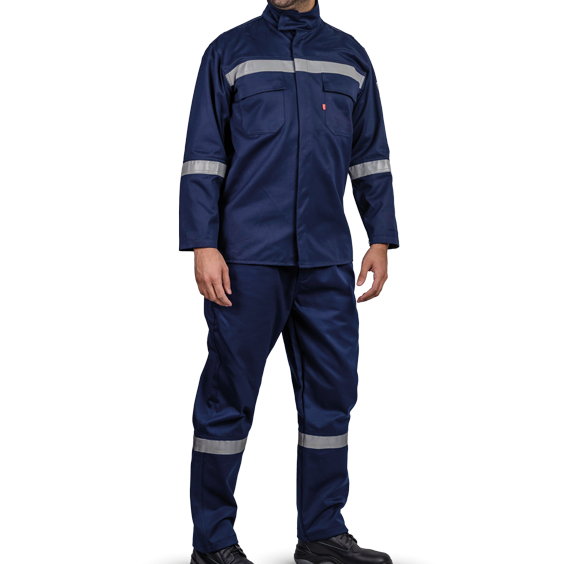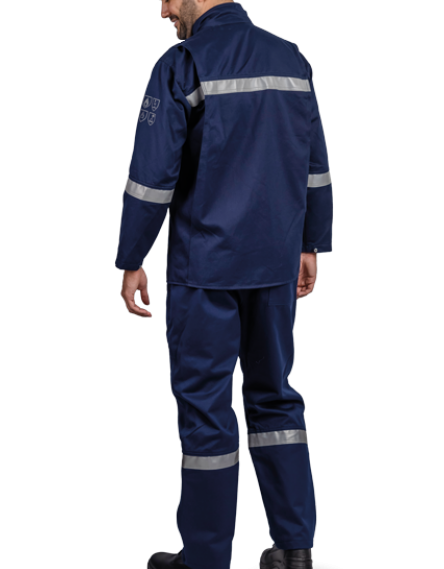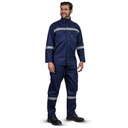BTS GIS4500 Molten metals protective Suit (Jacket + Trousers)
The BTS GIS4500 is the perfect protective jacket when working with molten metals. Made from a light and supple but inherently flame-retardant fabric, this suit offers excellent protection against molten aluminium (D3) and steel (E3). The jacket is lined with reinforced and sloped seams, which significantly increases durability and wear resistance and also reduces the risk of molten metal sticking to the seams. The standing collar and the sleeve narrowing provide extra protection.
Straight collar
FR Reflective tape on arms, torso and legs
Aramid sewing thread
Closure with hidden press studs under flap
2 patched chest pockets with flap closed by concealed press studs on jacket
Action pleats at the back
Adjustable cuff
Two side pockets, one hip pocket on trousers
Elasticated waist
Reflecitve tapes on jacket shoulders - optional
Inside pockets on jacket - optional
Fabric: Cotton, Modified acrylic, Viscose, P-Aramide, Antistatic Fabric ± 375 g/m²
Standards
EN ISO 13688:2013+EN ISO 13688:2013/A1:2021
EN ISO 11612:2015 A1+A2 B1 C1 D3 E3 F1
EN ISO 11611:2015 A1+A2 Class 2
EN 61482-2:2020 APC 1 (4kA)
EN 1149-5:2018
Tested for harmful substances according to Oeko-Tex® Standard 100

SIOEN Apparel
Sioen produces technical apparel for many different markets where people work in circumstances where safety, comfort and protection are major issues. Professional protective clothing — all weather, high visibility, multi norm, food and cold storage 1. SIP Protection — Forestry clothing. 2. Sioen Firefighter clothing. 3. Mullion — Floatation suits and life jackets. 4. Ursuit — Professional drysuits & diving suits. 5. Sioen Ballistics — Stab, slash and bullet proof garments. 6. Baleno — Outdoor leisure wear, hunting and fishing garments.
EN ISO 11612 Heat & Flame
Letter A (EN 15025) This test consists of applying a flame to a fabric sample for 10 seconds. To pass the test, the after flame & smoulder times and formation of holes must be within the tolerances within the standard. The application of a flame can take place in two ways: Code Letter A1 Surface Ignition, ISO15025 A Procedure A (leads to Class A1), the flame is applied horizontally to the face of the fabric No specimen shall permit any part of the lowest boundary of any flame to reach the upper or either vertical edges No specimen shall give hole formation of 5mm or greater in any direction, except for an inter-lining that is used for specific protection other than heat and flame protection. No specimen shall give flaming or molten debris The mean value of after flame time shall be ≤ 2s The mean value of afterglow time shall be ≤ 2s Code Letter A1 Edge Ignition, ISO15025 B Procedure B (leads to Class A2), the flame is applied to the bottom edge of the fabric sample. No specimen shall permit any part of the lowest boundary of any flame to reach the upper or either vertical edges No specimen shall give flaming or molten debris The mean value of after flame time shall be ≤ 2s The mean value of afterglow time shall be ≤ 2s Letter B (ISO 9151) Convective Heat: determination of the heat transmission when exposed to flames. The sample is held above the flame and the rise in temperature on the topside of the sample is measured with a calorimeter. The length of time the sample can remain exposed before its temperature rises by 24 °C is determined. B1: 4 < 10 seconds, B2: 10 < 20 seconds, B3: 21 seconds and longer Letter C (ISO 6942) Exposure to Radiant Heat. In this test, a fabric sample is exposed to radiant heat (infrared rays). The temperature on the reverse (unexposed) side of the sample is registered using a calorimeter. Subsequently, the length of time the sample the sample can remain exposed before its temperature rises by 24°C is measured. The test procedure is the same as ISO 11611, but the classification is different: C1: 7 < 20 seconds, C2: 20 < 50 seconds, C3: 50 < 95 seconds, C4: 95 seconds and longer Letter D and E (ISO 9185) D = Aluminium E = Molten Iron Determining the level of protection against spatters of molten metal. A membrane (with similar properties to human skin) is attached to the reverse of the fabric sample sequentially rising quantities of molten metal (Aluminium or Iron as applicable) are splashed on the sample. The quantity of molten metal which deforms the membrane is determined. The classification for molten aluminium is: D1: 100 < 200 grams, D2: 200 <350 grams, D3: 350 grams and more The classification for molten iron is: E1: 60 < 120 grams, E2: 120 < 200 grams, E3: 200 grams and more Letter F (ISO 12127) This is a new test to establish a value for contact heat. The classification in this respect: F1: 5 < 10 seconds, F2: 10 < 15 seconds, F3: 15 seconds and longerDetails
EN ISO 11611 Welding & Allied
Standard specifies two classes with specific performance requirements. Class 1: is protection against less hazardous welding techniques and situations causing lower levels of spatter and radiant heat. Class 2: is protection against more hazardous welding techniques and situations causing higher levels of spatter and radiant heat.Details
EN 1149 Anti-Static (ATEX)
This standard specifies PPE Clothing used in explosive environments (i.e. ATEX) where there is a risk that the garments could create sparks (source of ignition), which in turn could ignite explosive materials. Anti-Static garments marked EN 1149-5 are intended to be worn in Atex zones 1, 2, 20, 21 and 22. In oxygen enriched atmospheres or in zone 0, the Anti-Static garments should not be used without first being approved by a qualified Safety Engineer, as wear and tear can affect the protection of the garment and it is crucial that they are worn the correct way in these environments.Details
Inherent FR Garments
Inherent fabric guarantees lifelong protection for the wearer. The FR properties lie in the molecular structure of the fibres and cannot be washed or worn out. PROS: excellent heat and ARC protection, excellent colour fastness even after numerous washings hence good cost in use performance, typically lighter weight solutions with excellent comfort levels, typically used in less dirty environments where the corporate look is also important. CONS: limited protection against molten metal splash, typically a more expensive fabric than FR treated. The most common FR fibers used in protective clothing are modacrylics and aramidsDetails
Share this product:
| Garment Size | S - Small or M - Medium or L - Large or XL - XLarge or XXL - XXLarge or XXXL - 3XLARGE or 4XL - 4XLarge |
| Color | NAR Navy |
Once the user has seen at least one product this snippet will be visible.
